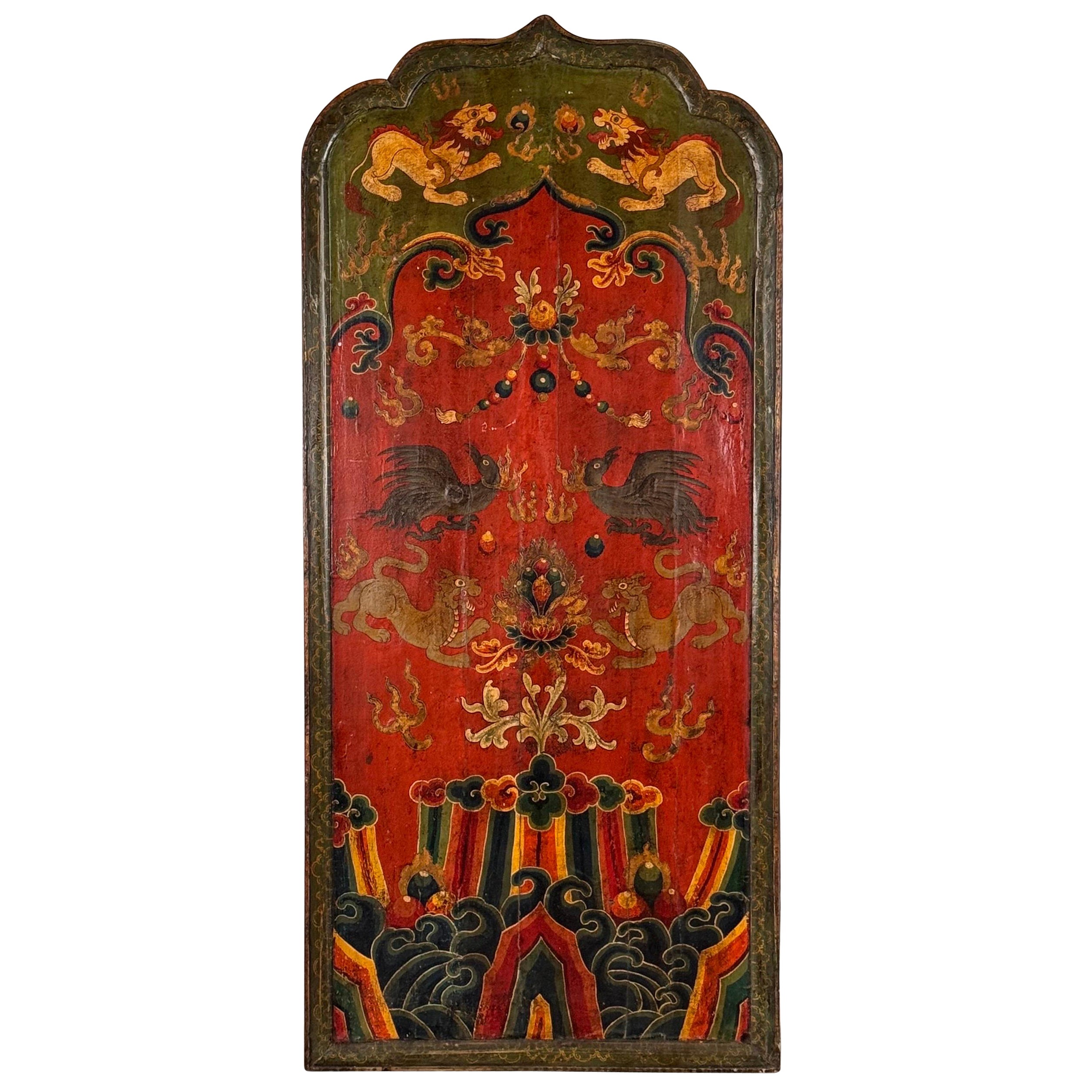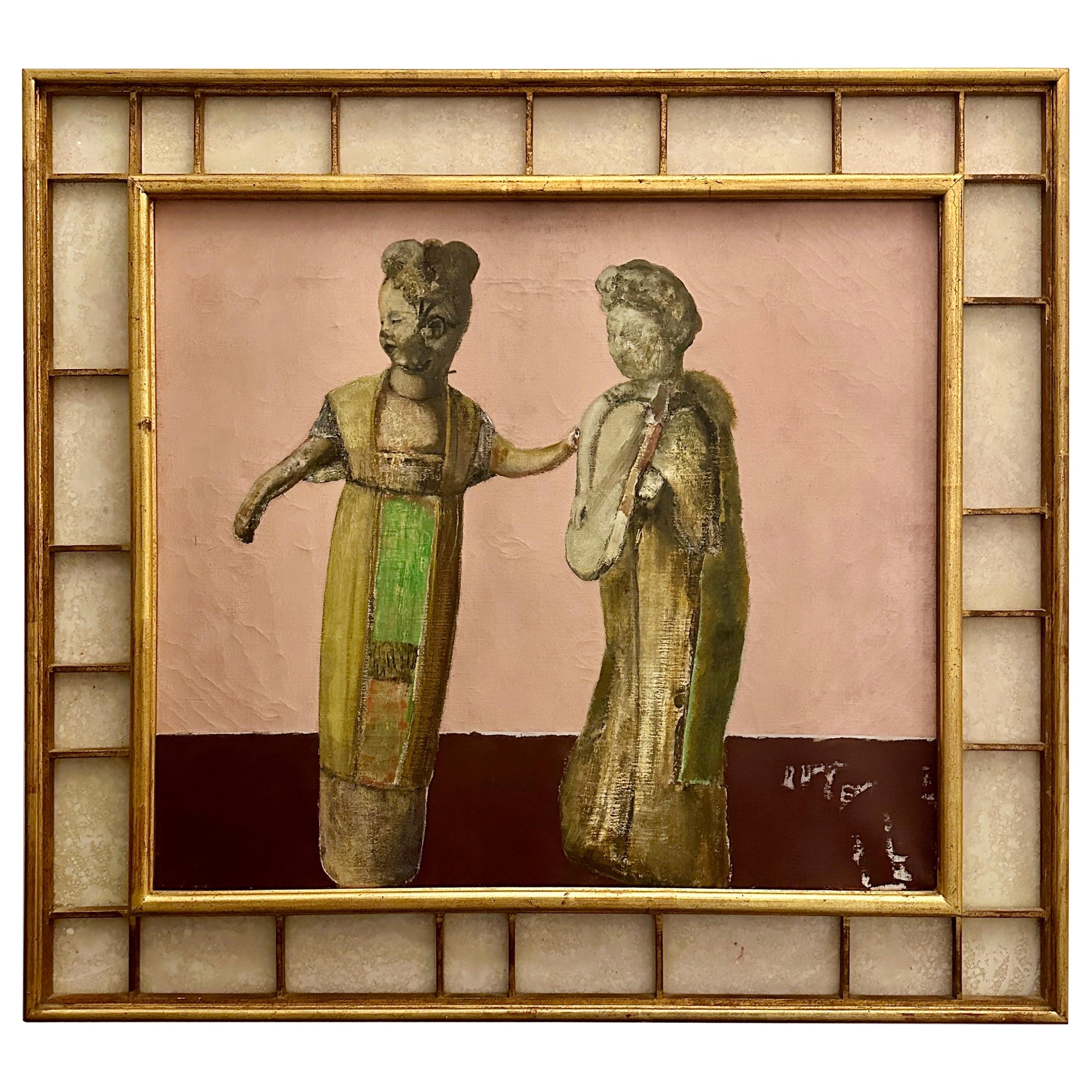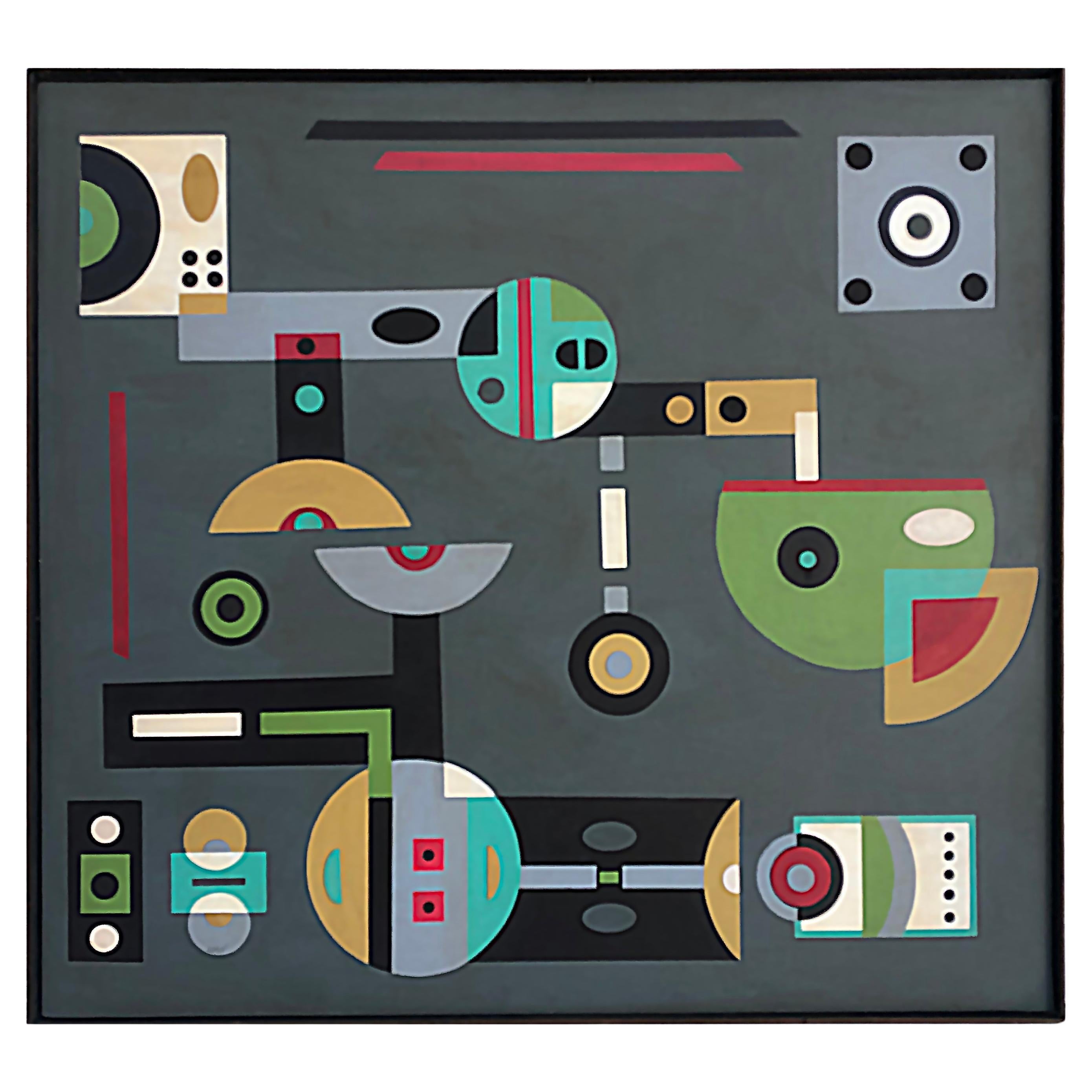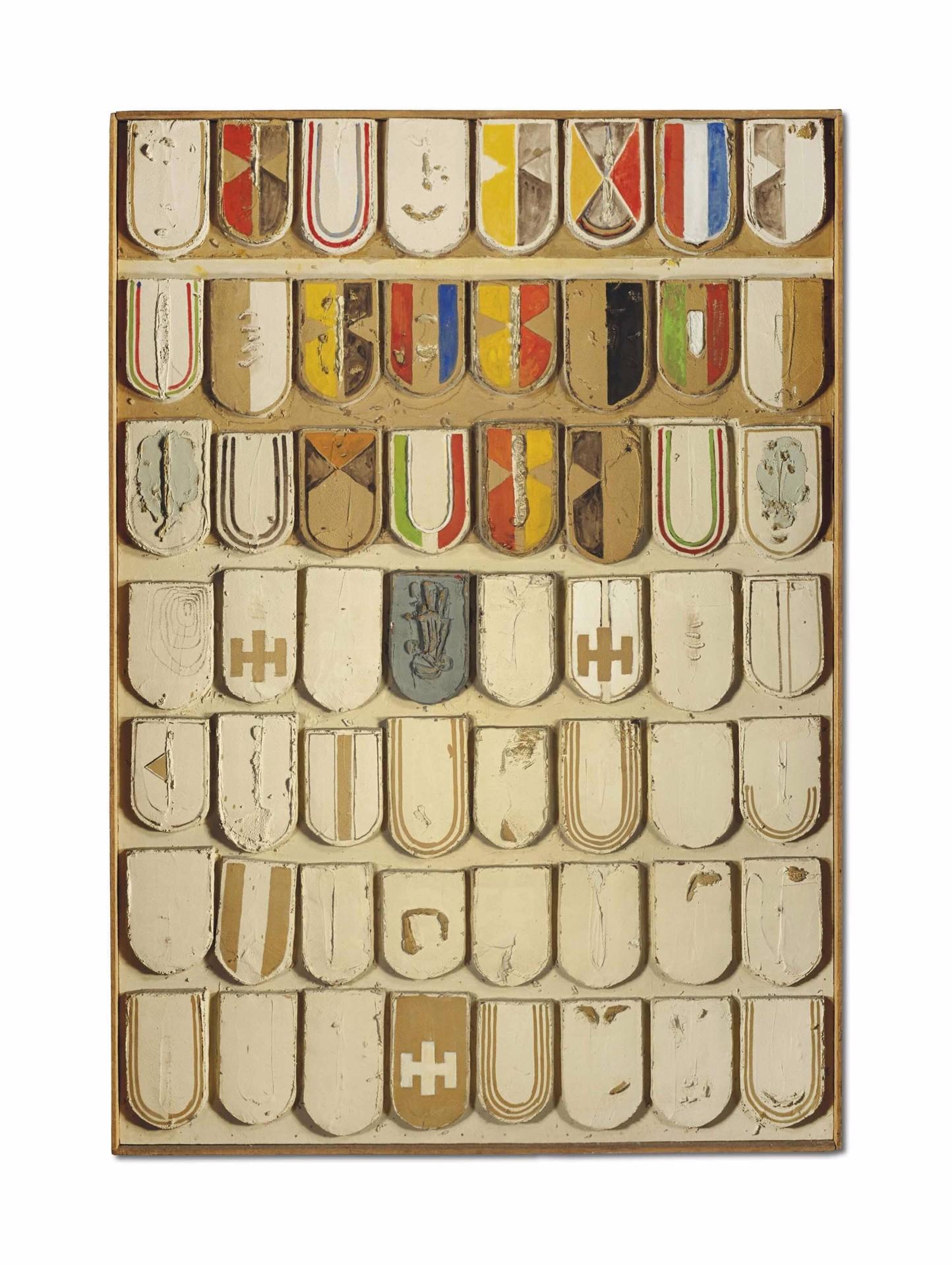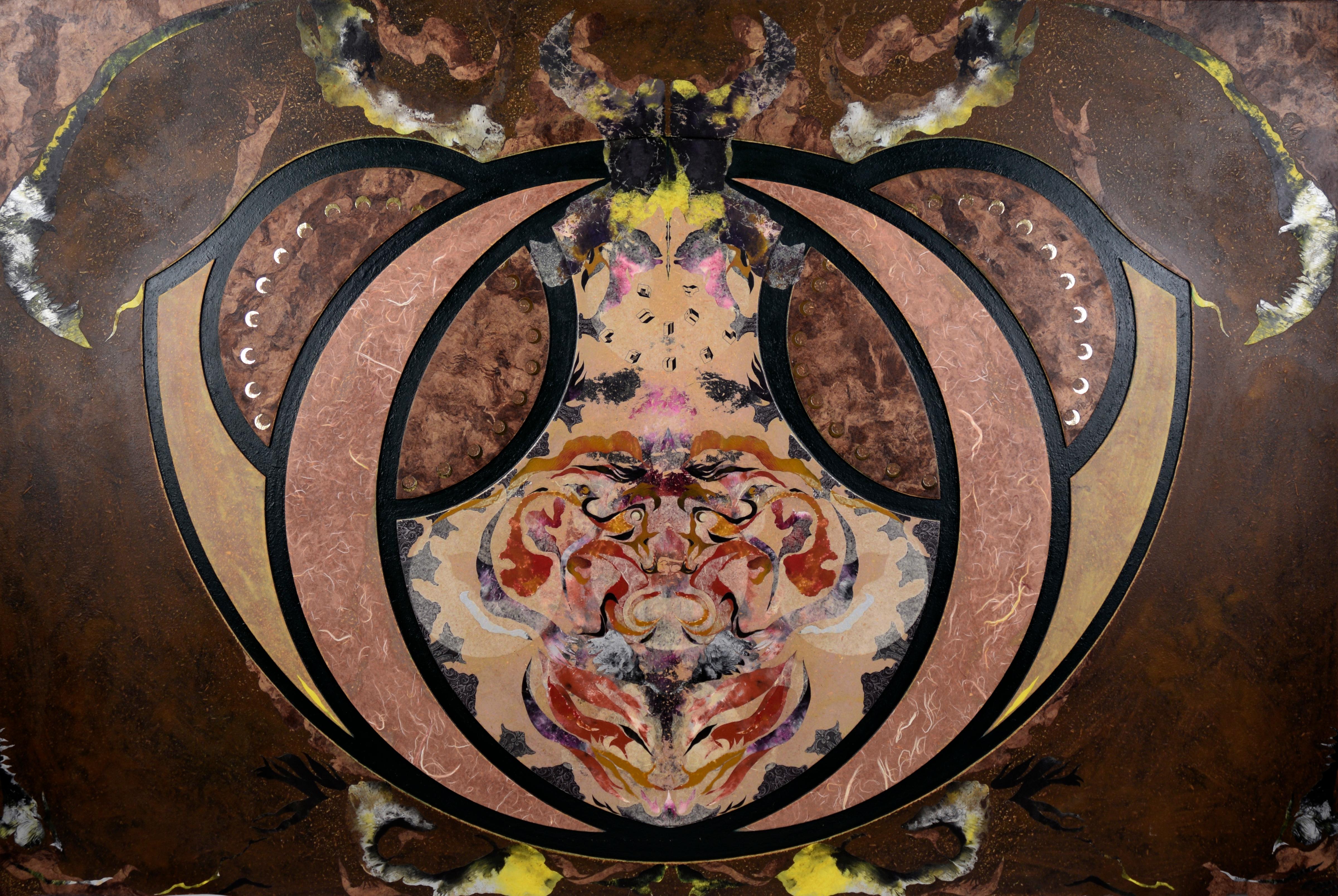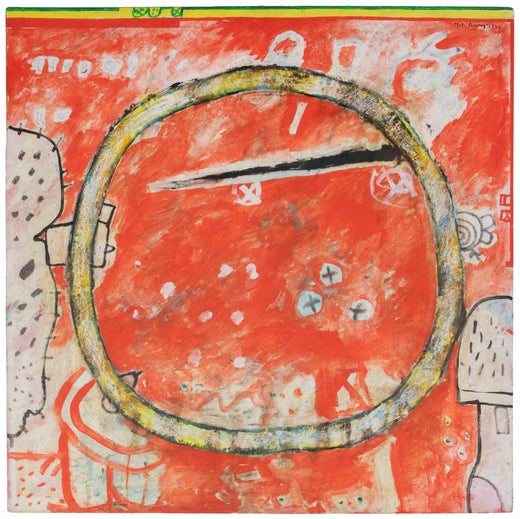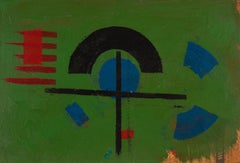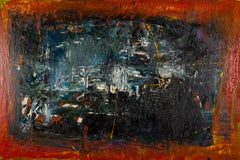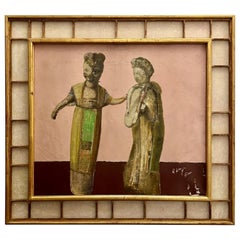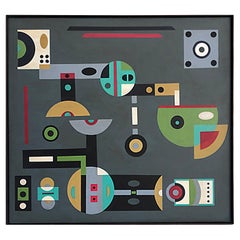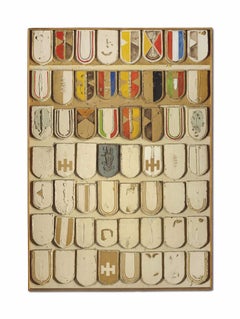Martin BradleyUntitled (Double Happiness), 1965 - Oil Painting on Wood with Chinese characters1965, circa
1965, circa
About the Item
- Creator:Martin Bradley (1931, British)
- Creation Year:1965, circa
- Dimensions:Height: 72.01 in (182.9 cm)Diameter: 72.01 in (182.9 cm)
- Medium:
- Period:
- Condition:
- Gallery Location:Kingsclere, GB
- Reference Number:1stDibs: LU2718216389842
Martin Bradley
Martin Bradley was born in 1931. The English painter is best known for abstract and symbolic artworks, influenced by the Japanese and Chinese calligraphy, as well as Buddhism, to which he converted. His name is always associated with travel; while he was traveling in Central and South America, he painted portraits of his shipmates. After his return to England, he studied Oriental languages, literature, and art history and developed a fascination with calligraphy art. During the 1950s, he moved to France, where he came in contact with Rudolphe Augustinci, who was the director of the famous art gallery. In 1978, Marcello Avenali, director of the Academy of Rome introduced him to Tatsuko. In 1979, entering in the ranks of the faithful of Nichiren Shōshū Buddhism, he lived in Mercatale in Val di Pesa, in the Chianti region (Tuscany, Italy) and signed a contract with Samy Kinge. Today, Bradley's artworks are held in the Tate Gallery collections in London, UK, and the Museum of Modern Art in New York, USA. His artworks have been collected by Sir Barbara Hepworth, Sir Roland Penrose and Sir Herbert Read.
- ShippingRetrieving quote...Shipping from: Kingsclere, United Kingdom
- Return Policy
More From This Seller
View All20th Century Paintings
Canvas, Oil
20th Century Abstract Paintings
Canvas
20th Century Landscape Paintings
Board
20th Century Abstract Paintings
Oil, Board
20th Century Abstract Paintings
Canvas
20th Century Abstract Paintings
Canvas, Oil
You May Also Like
Antique 1890s Tibetan Tibetan Decorative Art
Wood
Vintage 1960s American Mid-Century Modern Paintings
Canvas, Glass, Giltwood
Mid-20th Century Cuban Paintings
Wood
1960s Abstract Expressionist Paintings
Oil, Wood Panel
1990s Outsider Art Figurative Paintings
Gold Leaf
Early 20th Century Japanese Meiji Paintings and Screens
Silk, Wood, Paper
